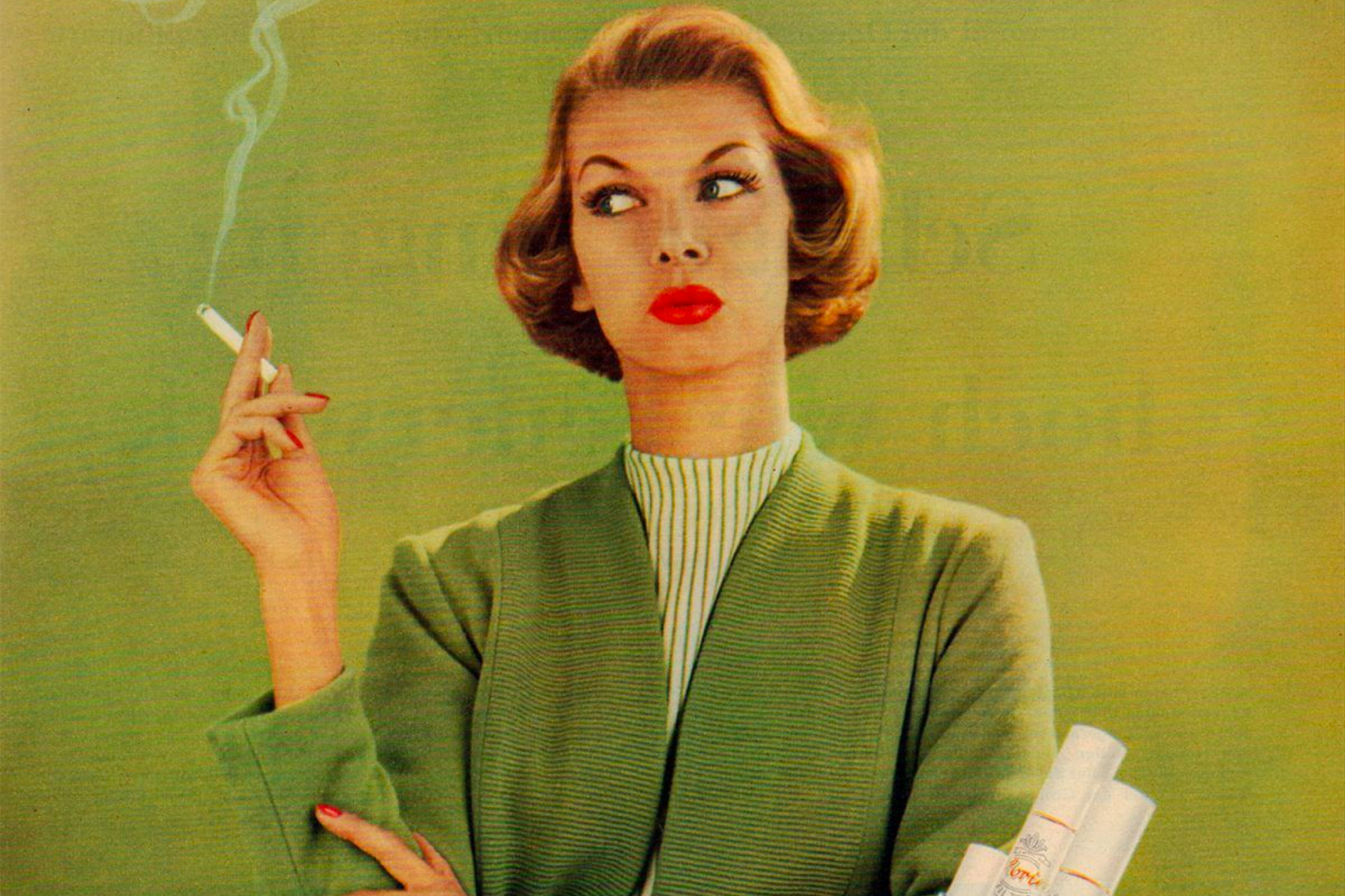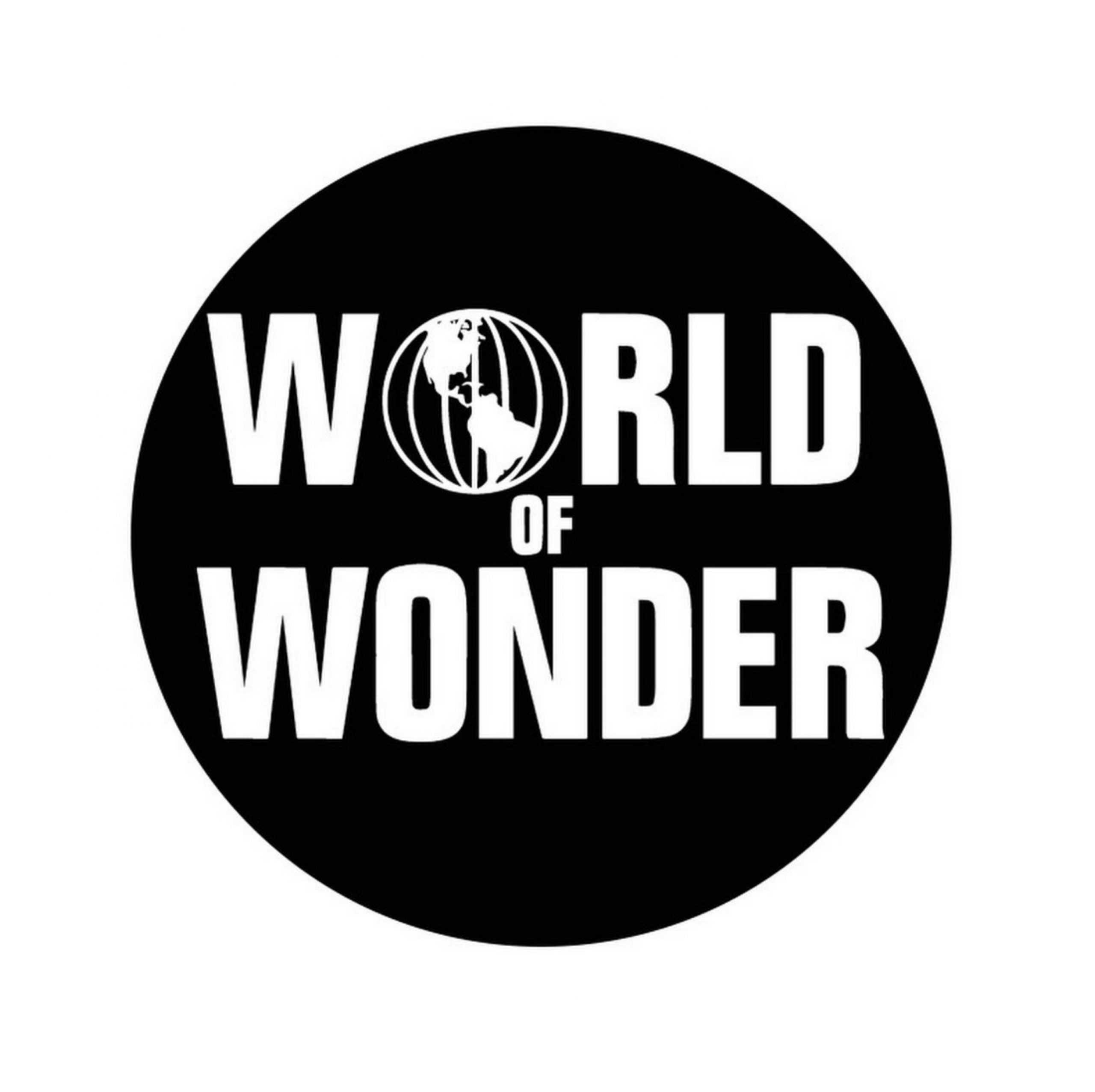Many of us have at least indulged in a cigarette, perhaps on a night out or after a long day of work. Smoking is more than ever before viewed as a naughty habit, with what we know now about cigarettes, the risks they carry outweigh their once very different reputation.
Before the The Tobacco Advertising & Promotion Act 2002 came into place, smoking was everywhere in the UK. It was in soldier’s rations in WWII, on billboards, television, in bars and on the nightstand. You could browse behind the counter for your favourite flavour like a sweet shop. They’ve been marketed to death, truly. Health benefits, symbols of status, weight loss, even aphrodisiacs. Then, how did we go from “doctor’s recommend” to all but banned?

The earliest recorded cigarette advert dates back to the 1800’s, promoting tobacco as a calming, medicinal product. As cigarettes rose into mainstream use, brands grew, along with competition. From the all American dreamers of Marlboro to the “medically approved” toasted Viceroy’s, brands pushed hard onto every consumer group. Not to mention a large wave of rather provocative advertisements, heavily pushing the cigarette as a symbol of independence, sensuality and power…
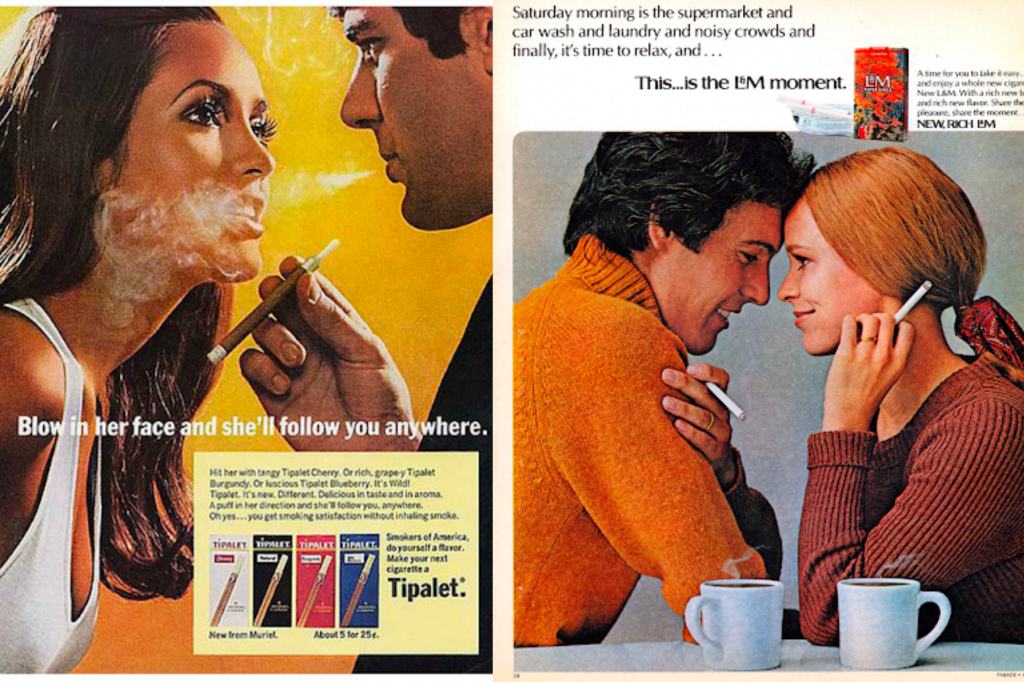
With the surge in cigarette sales came studies, and with the results came restrictions. Cigarette advertising lessened to certain audiences, then was all but removed from shelves. Packaging has been pulled back to warnings, graphic imagery and hidden behind sliding doors. How are cigarette companies meant to market and brand themselves against their competitors with such restrictions?
How we’ve viewed cigarettes in society has changed drastically, but what does this mean for them on screen? We still see smoking in film and television to this day, just not nearly as much. So with the limitations, both legal and societal, what’s changed about the representation of the cigarette?
One interesting comparison we can make from real life to screen is Sex and the City’s Carrie Bradshaw. In the first two iconic seasons, Carrie’s go to was a Marlboro Light, endorsed and placed as many cigarettes on screen were in the 20th Century. It represented Carrie as a cool, independent 90’s woman, a free spirit in control of her body and life. Yet when the public opinion on smoking began to change, so did Carrie’s habit, now she became irritable without them, slipping back into her comfort as we all have done quitting. In season three, Carrie successfully managed to break the habit in a true to life fashion, much so that the series won a PRISM award in 2001 for an accurate depiction of nicotine addiction.
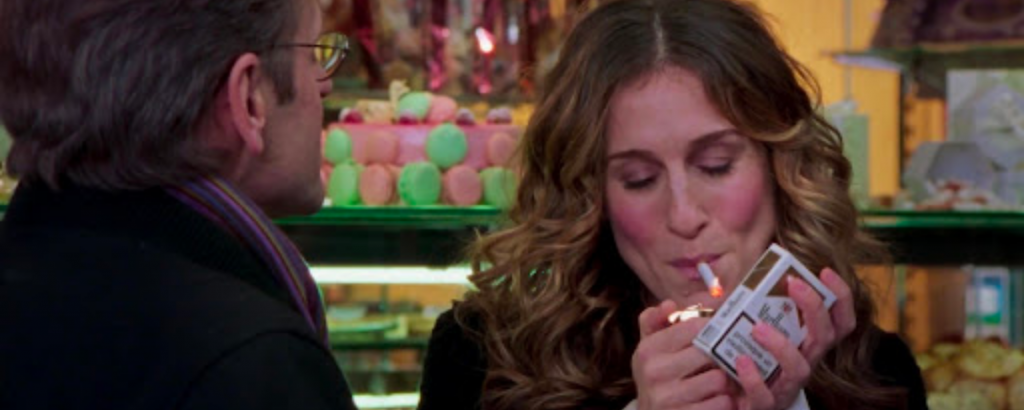
Although in early cinema, it was said that cigarettes were not much more than a prop, a way of giving actors something to do with their hands. Hollywood and tobacco had a profitable relationship, studios being paid as well to have their cigarettes featured on the silver screen.
Directors would use the cigarette as a symbol, just as they are now, for power, relaxation, seduction and, in most cases for female actors, misdeed.
“In the movies, when you wanted to characterise a woman as being disreputable, she lit a cigarette and you knew who she was at once.” Ed Brecher
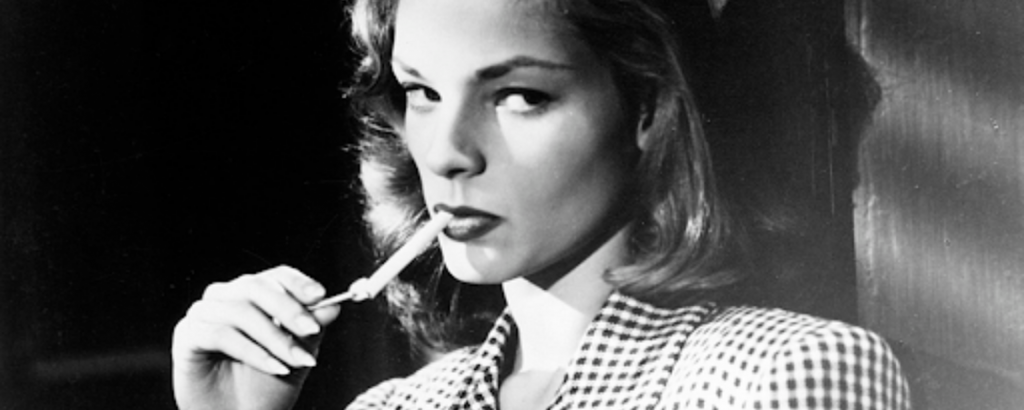
Cigarettes and women were rarely used in film or advertising, they used to be deemed inappropriate and suggestive, but that meant a limitation in the market for tobacco companies. To overcome this barrier, George Washington Hill, President of American Tobacco Co. turned to “The Father of Public Relations”, Edward Bernays, to solve the stigma held on women smoking. How did they do it? A marketing stunt, of course.
In 1929, the Easter Sunday Parade was taking place in New York, where Bernays would launch a movement that became known as Torches of Freedom. By contacting some female acquaintances and hiring others, women marched with cigarettes in hand in the parade, beginning a new wave of consumerism and marketing of tobacco.
Stars like Joan Crawford in 1937, were paid thousands of dollars to smoke Lucky Strike, tying Hollywood and tobacco firmly together even more than before. One of the largest booms for tobacco in advertising came a couple years later, during World War II. Over seventy-million cigarettes were sent in soldier’s rations, and in return, they became part of the next big advertising boom.
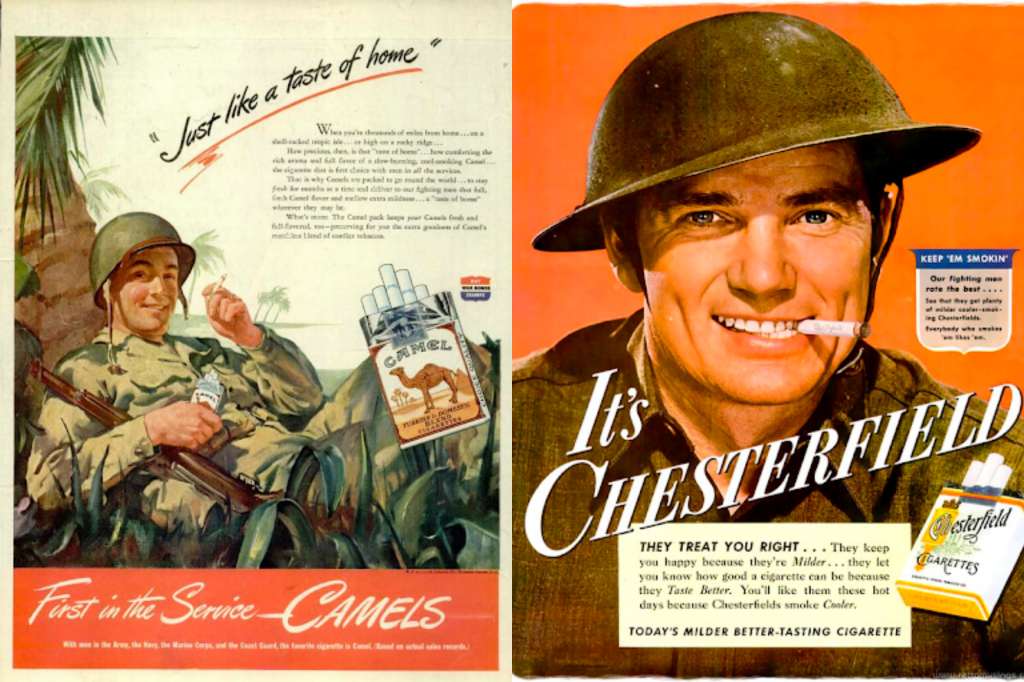
Of course, once many soldiers returned home, they took the habit home with them. More studies came out about the risks of nicotine addiction and tobacco, which meant the norm of advertising a Toasted Lucky Strike, became a risk. And with advertising, indoor smoking and tobacco in film bans, we end up with something very different today.
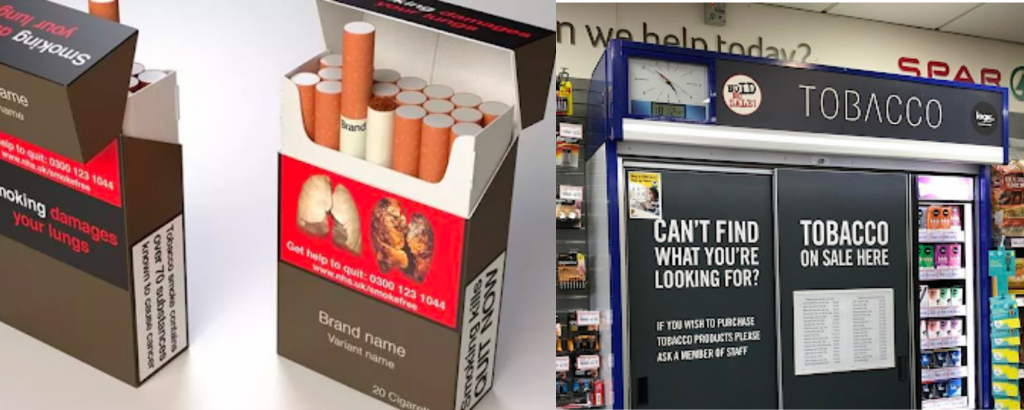
In the space of two hundred years, tobacco advertising has been a whirlwind. The public are still allowed to purchase their favourite brand, but the once great glamour behind the habit has all but faded and been replaced with health warnings, and very minimal branding.
Vaping and e-cigarettes have now taken over the market, but with a less health-risk approach. But will that market continue to boom, or will it follow in tobacco’s footsteps, and vanish in a puff of smoke? Only time will tell.
